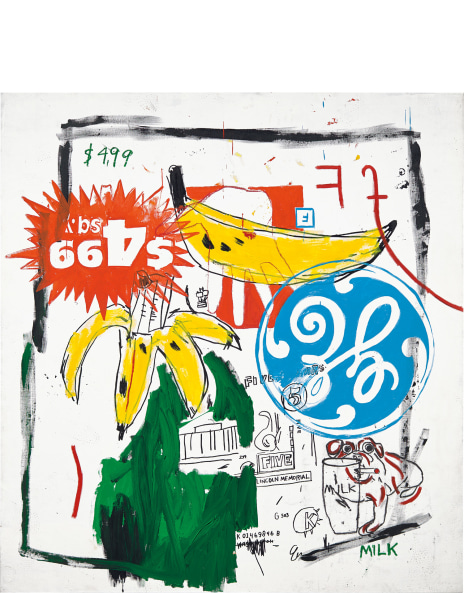
From Impressionism to Pop Art: Every Movement Begins as an Artist Group
If you’re wondering whether you’d like to join a local artist group or create your own, it may be intimidating to imagine yourself among the ranks of the world’s greatest artists. But Claude Monet, Edgar and Eduard Manet began as hopeful, but penniless artists. Rejected by the salons of their day, they met daily at the Café Guerbois to drink coffee and furiously debate the future of art.
Their so-called Anonymous Society of Painters, Sculptors and Printmakers didn’t stay anonymous for long. But it offered them the same moral support, peer learning and shared vision an artist’s group or collective can provide today’s future masters.
Let’s look at all the advantages an artists’ group might offer you.
Join a Movement and Enjoy a Clear Vision
The history of art is articulated as a series of movements and isms: fauvism, futurism, surrealism. Movements usually hold value only in retrospect –Parmigiano waited two centuries to discover he was the father of Mannerism. But whether you called it a movement, an identity or a group, there can be real value in attaching yourself to a shared vision. You may be included in group shows and exhibitions. You have a greater voice, enjoying more resources, contacts, and influence. You take up more space in the art world, are more determined, and in many cases, are louder and more self-assured. You have a much wider knowledge and skills base to draw from. If you are shy, there may be other members of the group who are confident, forthright and articulate and willing to speak up in your place, champion your work and defend you from attack, or ridicule – commonplace things in the world of art.
Broaden Your Network
To become a successful working artist, you need to know people. Even the most casual group of your fellow artists will expose you to a wider art network. Your future collaborators, gallery owners or a local storefront business looking to commission a mural might be at your next coffee meet-up or gallery opening. In particular, if you’re living far outside the major art capitals, local groups can help you thrive and achieve the deep network that any New York or London-based artist would envy.
Learn the Business of Art
Let’s face it, being an artist isn’t just about making art. There’s setting prices, record keeping, building a website, establishing an LLC and finding liability insurance (to name a few!). Seasoned artists who have been there and done that can coach you through a tricky business issue or give you a reliable word-of-mouth referral to budget-friendly advisor who can help. Furthermore, an artist group bears the convening power to attract useful speakers. A local lawyer might charge you $300 per hour (or more!) for a simple consultation on how to set up an LLC, but would delighted to speak to a group for free. Don’t underestimate the power of your art collective to save you money.
Get Feedback and Inspiration
It’s hard to labor in isolation, wondering if your work is any good. Fortunately, you don’t have to. Artists can meet to share ideas, offer each other feedback and “workshop” their art. You may be surprised how much a fresh perspective and some gentle but constructive criticism will transform your work or point you in a direction you might never have found alone. Seeing how other artists approach the same question or technical issue can save you time and take your art to a new level.
Explore New Media
Some of the strongest artists in history were interdisciplinary. Imagine the loss to the world if Michaelangelo had confined himself to sculpture! Perhaps you’re a painter, but members of your group might be experts in ceramics, textiles or glass. Even if you are firmly wedded to your discipline, it can’t hurt to learn the basics of new techniques. Many local artists’ groups organize workshops where a member provides a short training in a new technique.
Find Collaborators
Joining an artists’ collective or even just making friends with other local artists can lead you to fruitful opportunities for collaboration. Andy Warhol and Jean-Michel Basquiat enjoyed a partnership that lasted six years, with Warhol’s playful take on consumerism enhanced by Basquiat’s exuberant graffiti. The combined work was entirely different than what either had ever produced alone.
Organize Public Events
From local art festivals to public exhibits, there are so many ways that a small group of artists can bring art and joy to a wider public. With the smallest budget, you can host a local art walk in your homes. It’s a chance to sell art, and collectors love the opportunity to see home studios in action. Or you can work directly with your municipality or a Chamber of Commerce to host a daytime festival or nuit blanche. Local businesses love the foot traffic and are often happy to sponsor. There are so many ways to publicize your art, and an artist group can help you gain more visibility through both large-scale events and media coverage you could never achieve alone.
Share Costs for Space
Sometimes working from home isn’t enough. A glassblower may need access to costly equipment, and a painter may simply want the camaraderie of a lively shared studio. But you don’t want rent to eat into your profits, especially when they are slim in the early days. That’s why joining an artists’ collective can be a great investment.
Join a Co-Op Gallery
Equally, you may want to go beyond workspace and join a cooperative gallery. Galleries aren’t always the right fit for emerging artists. They are profit-driven, extract commissions that can exceed 50 percent and favor artists with an established track record of strong sales. In contrast, co-op galleries usually run as non-profits and revenue is shared among members. Better yet, more seasoned members can coach you on the ins and outs of the art business – from bookkeeping to marketing.
How to Choose the Right Artist Association for You
Whether it’s called a collective, a co-op, an association or a group, there are clearly many advantages to joining forces with other artists. But your time, resources and energy are finite. So how do you decide what organization is right for you?
Here are a few questions to ask yourself before committing to a group:
-
Local vs National
Do you want the camaraderie and intimacy of a group centered in your community or state, or do you prefer the national reach and authority of a national (or even international) organization?
-
Group Purpose and Values
Do you prefer a group composed of members that work in a single media? Or a group whose members identify with a particular shared identity or common political or social cause?
-
Events and Marketing Opportunities
Do you want a group that hosts exhibits, art walks, or community events? Would it be helpful to combine your collective resources to extend your visibility and voice?
-
Time Commitment
How often do you want to attend events? Does the group come with any required meetings or volunteer work (such as staffing a co-op gallery)?
-
Return on Investment
Do you have to pay dues? If so, what value does the organization provide, in terms of events, workshops, speakers or juried shows?






